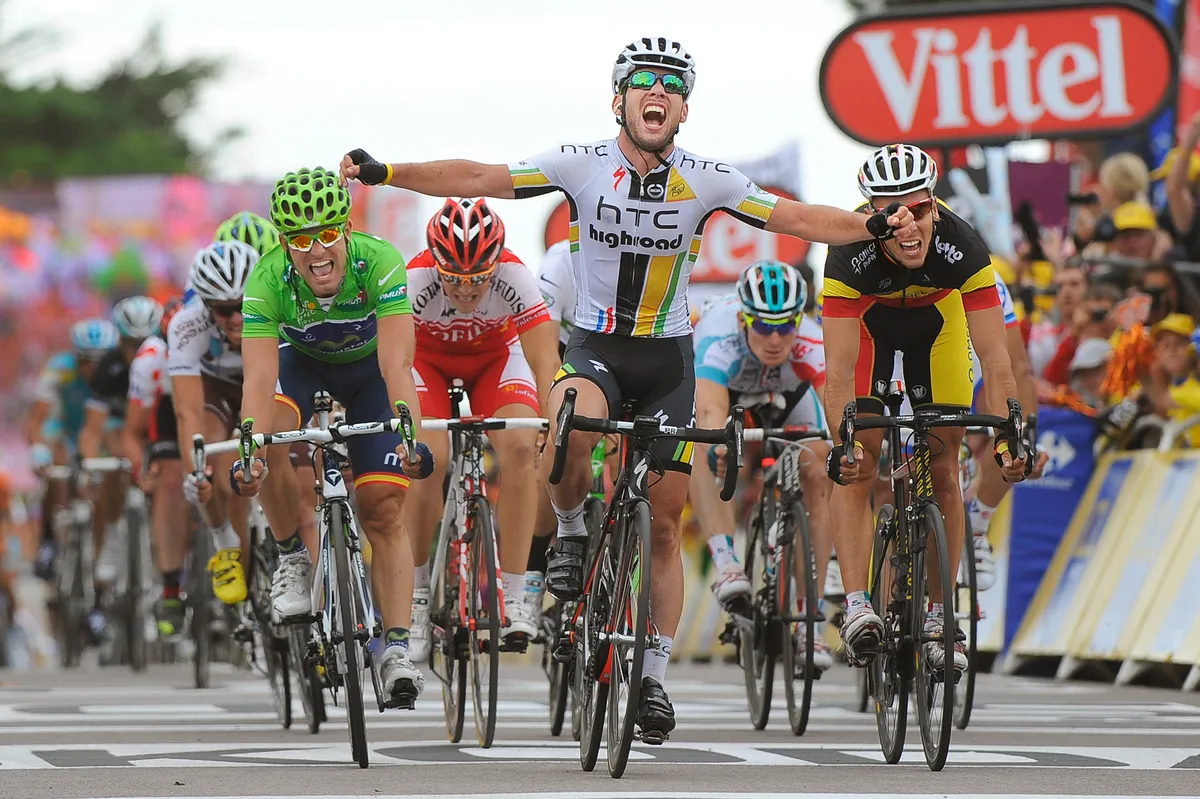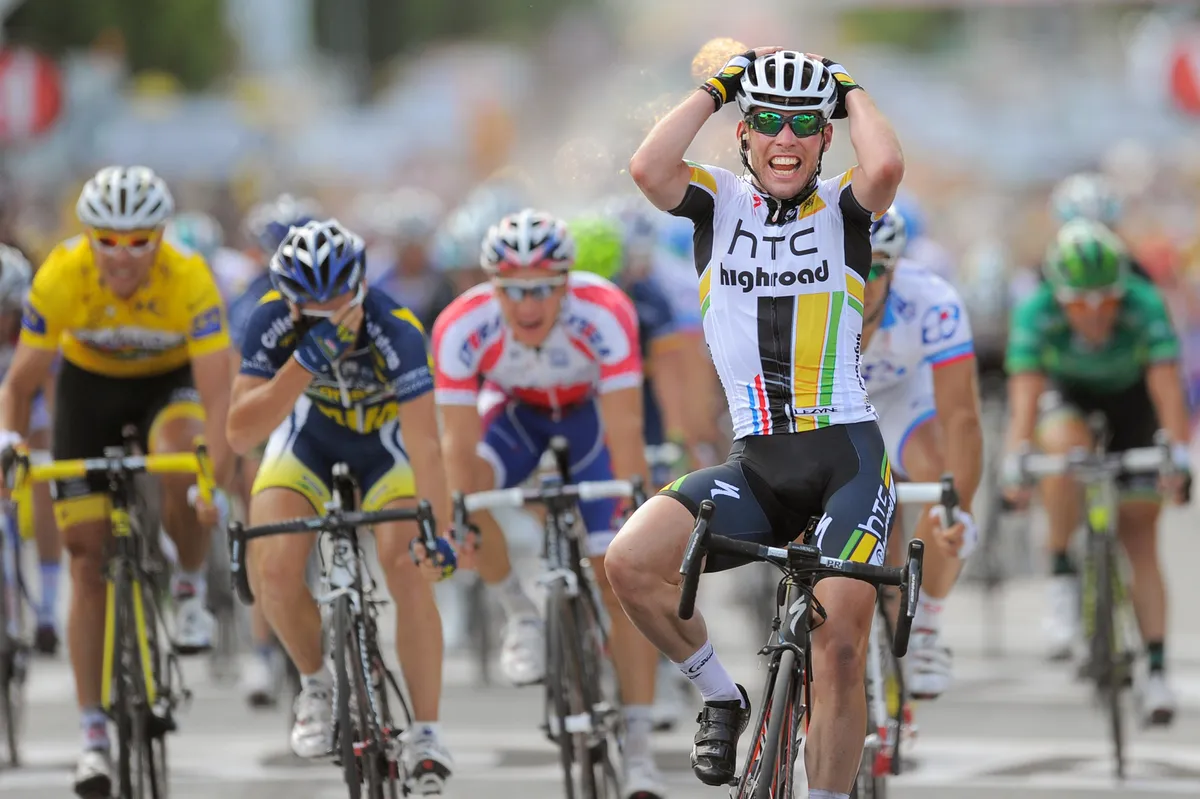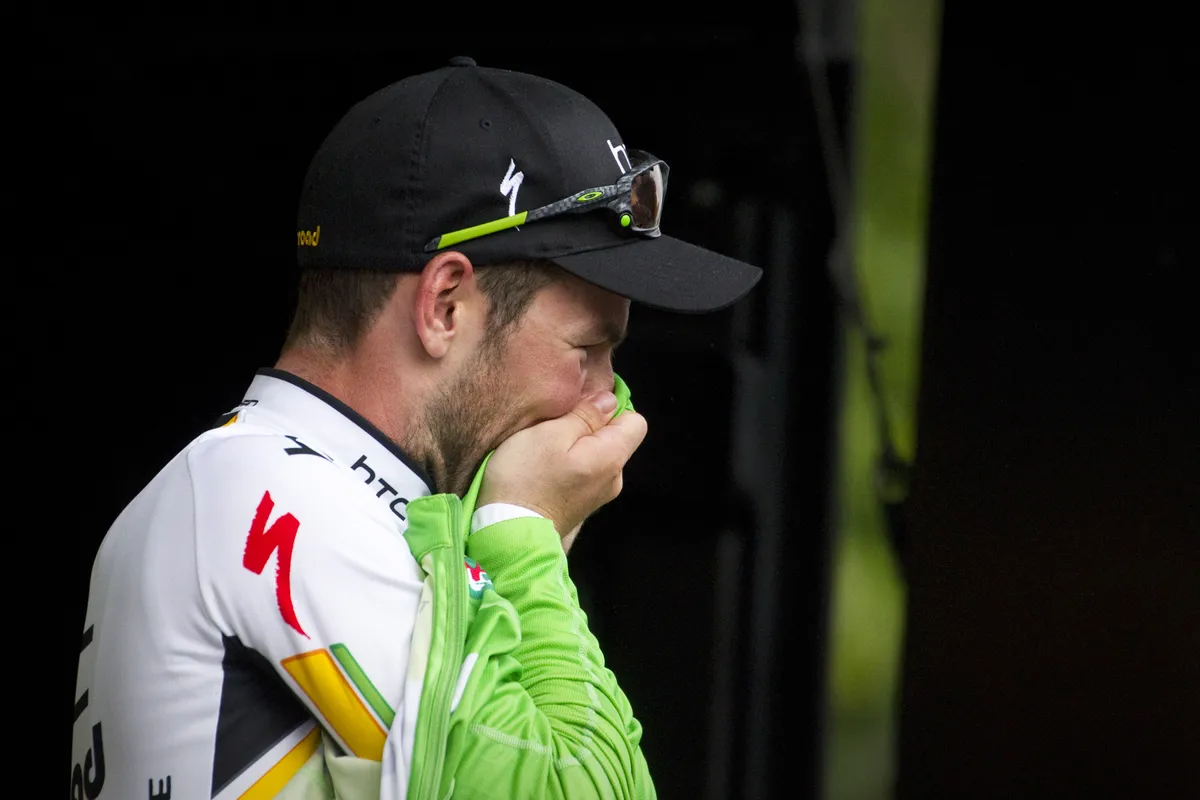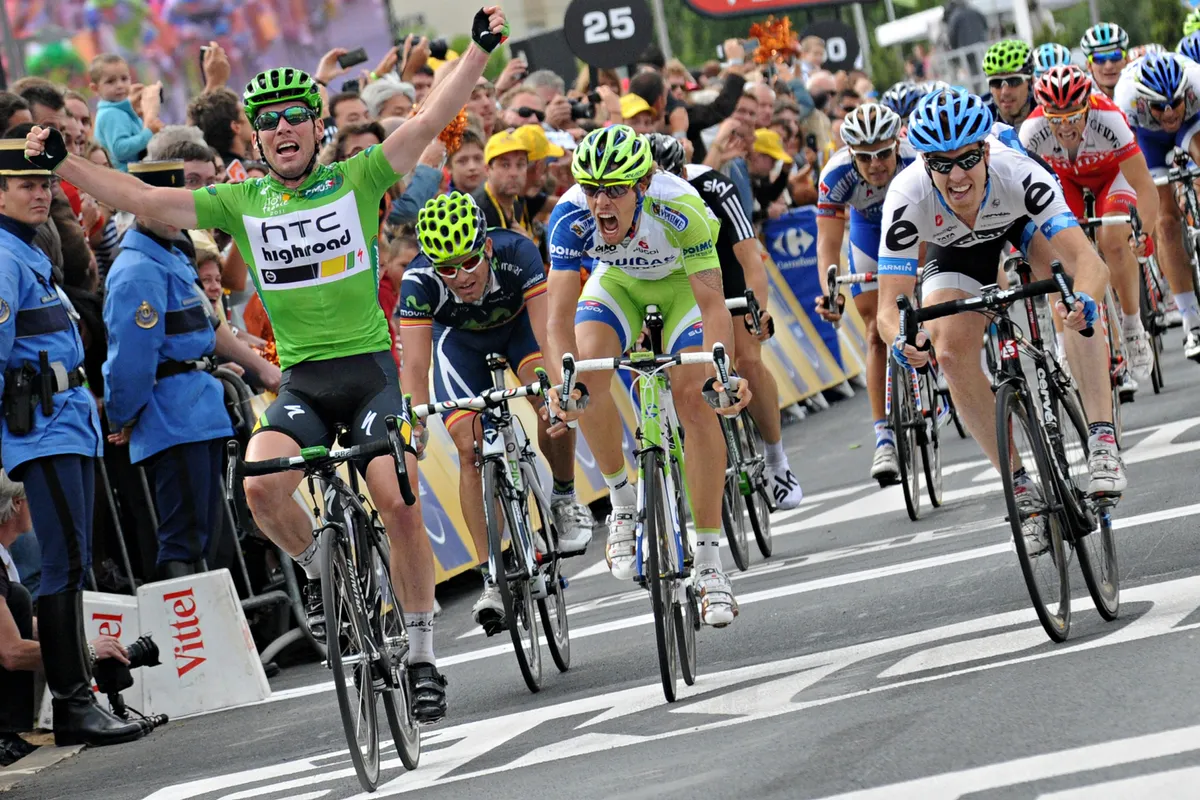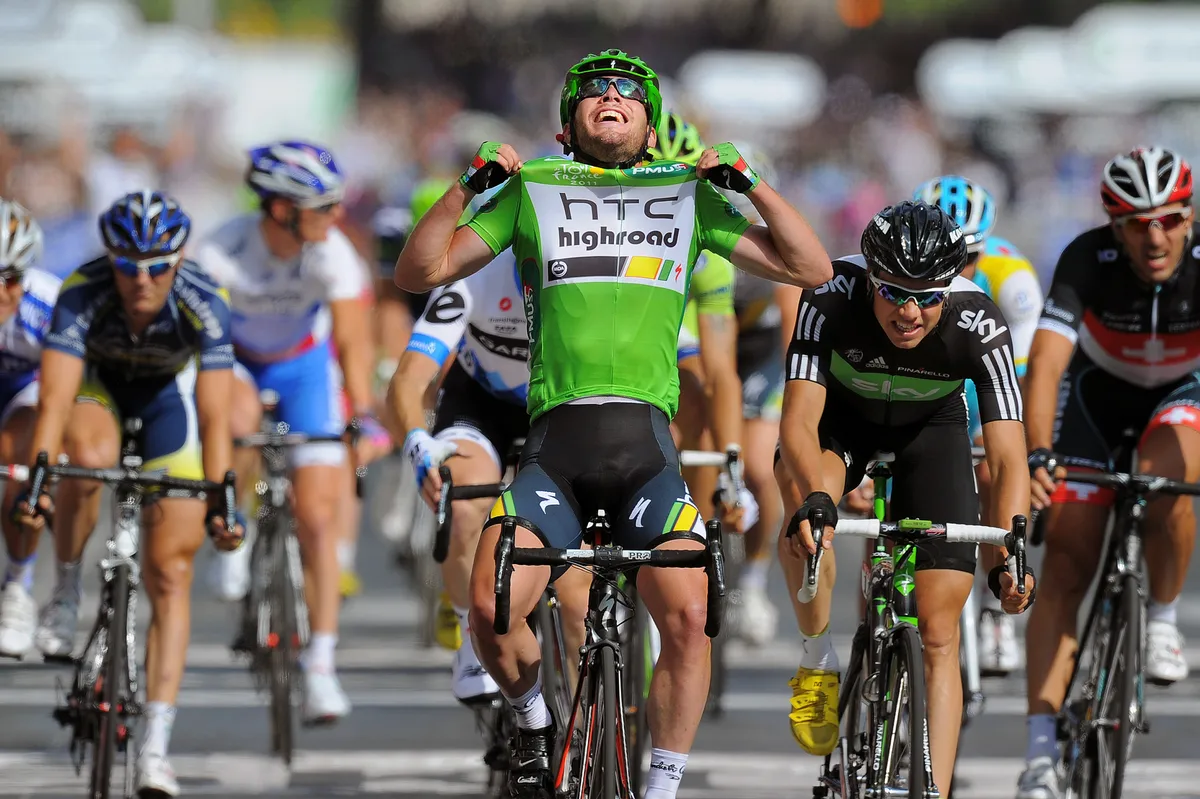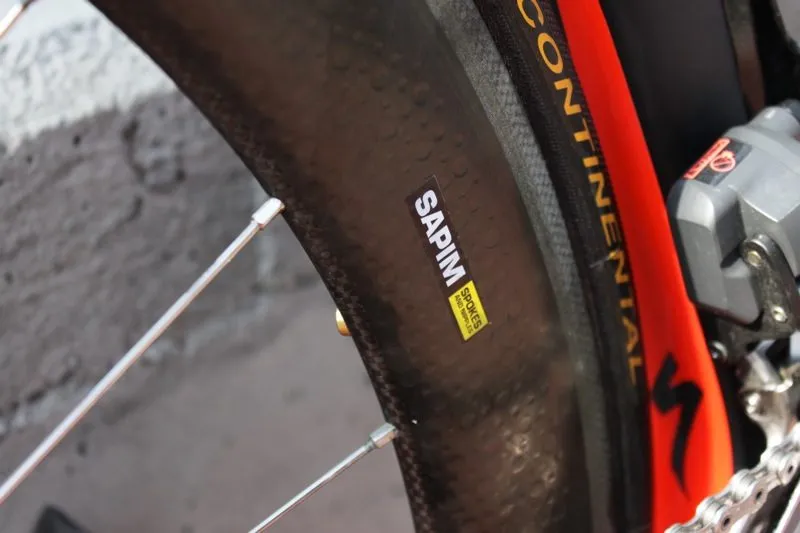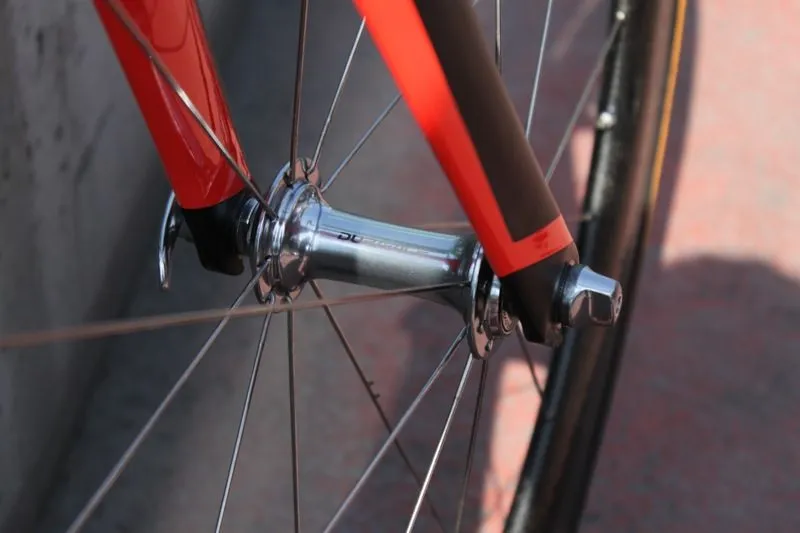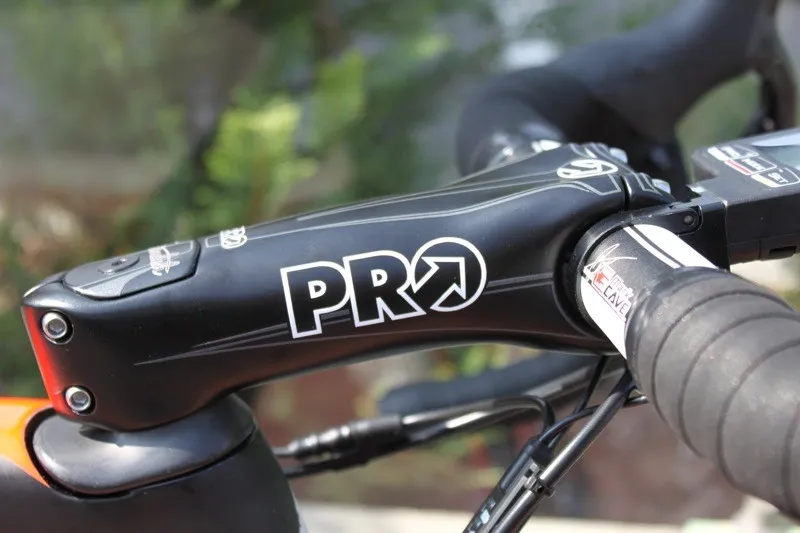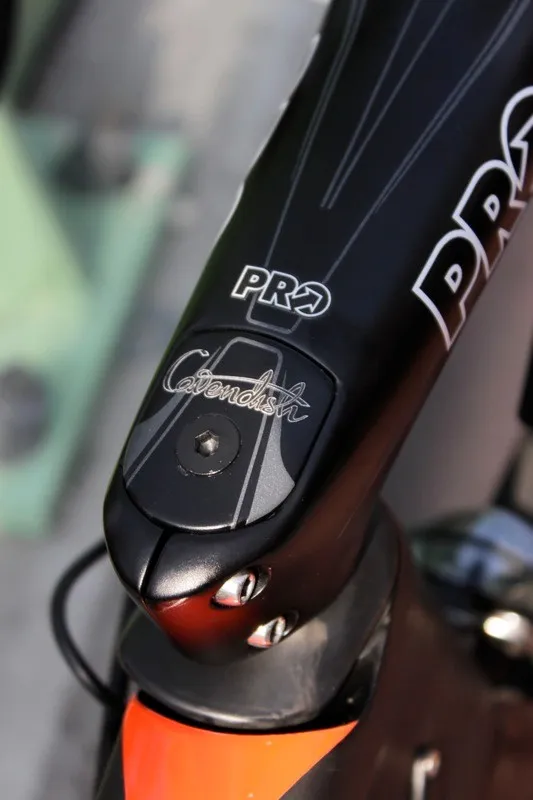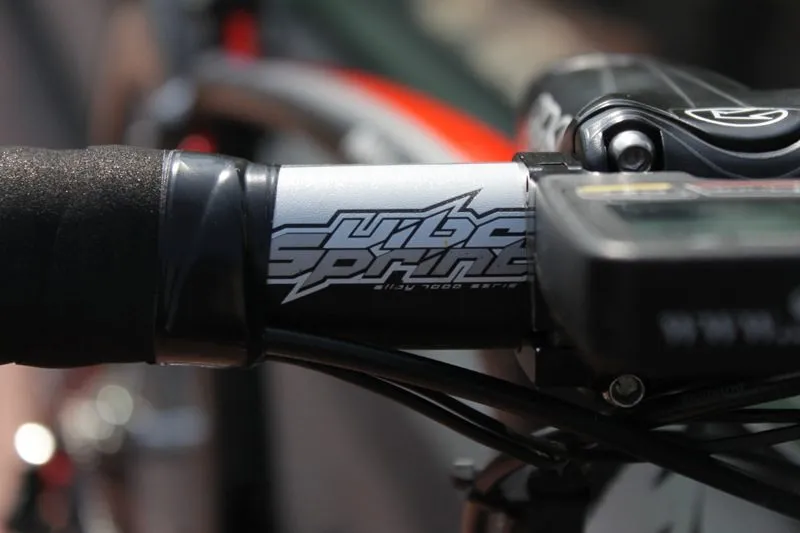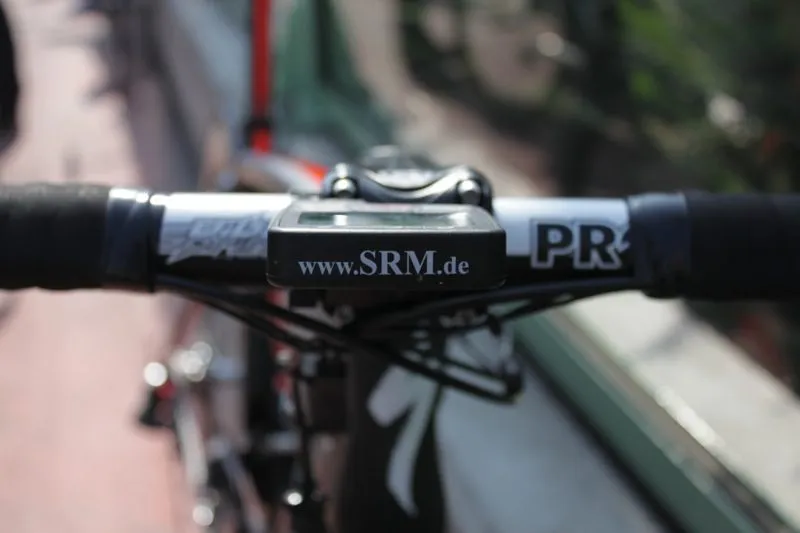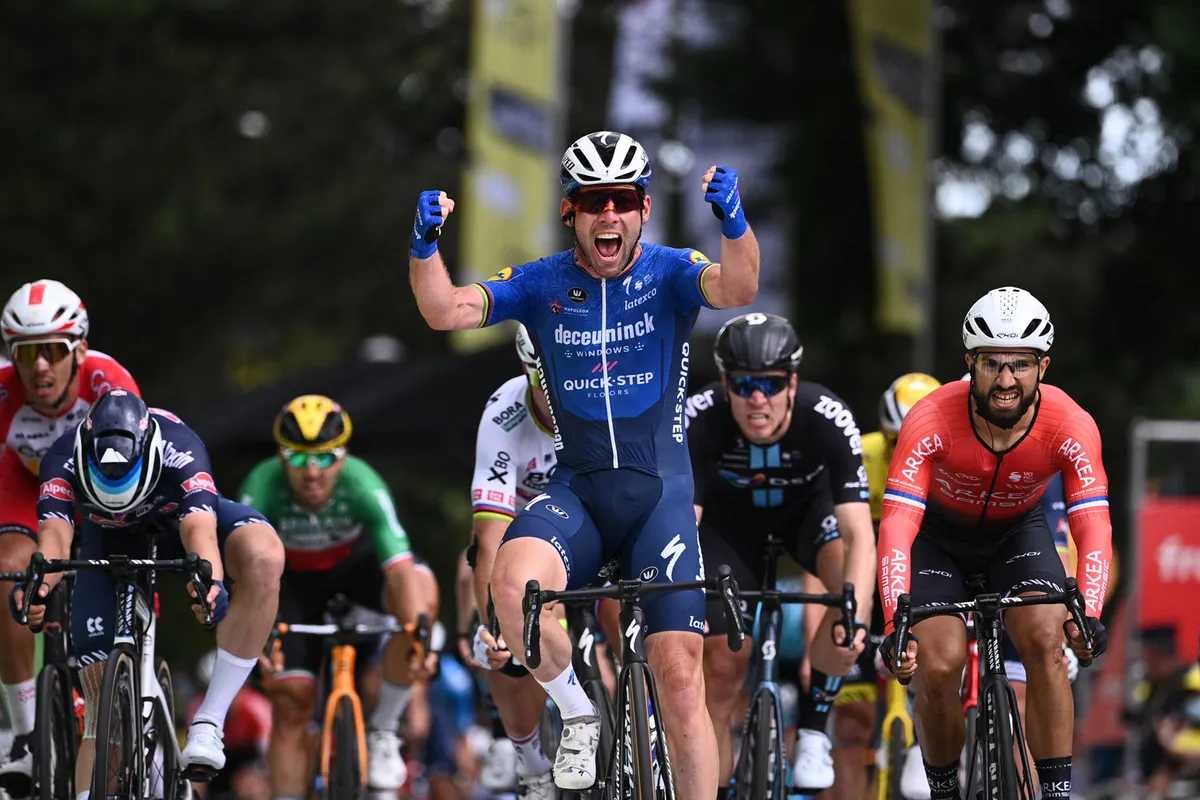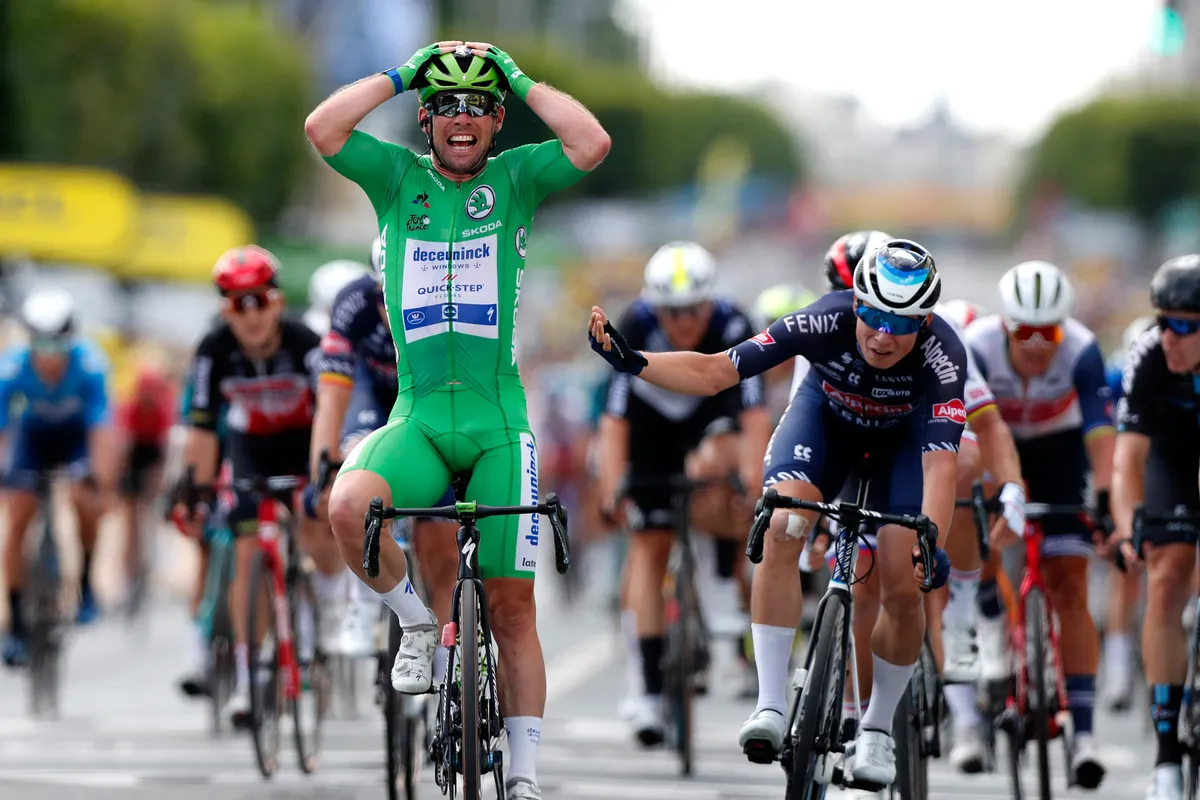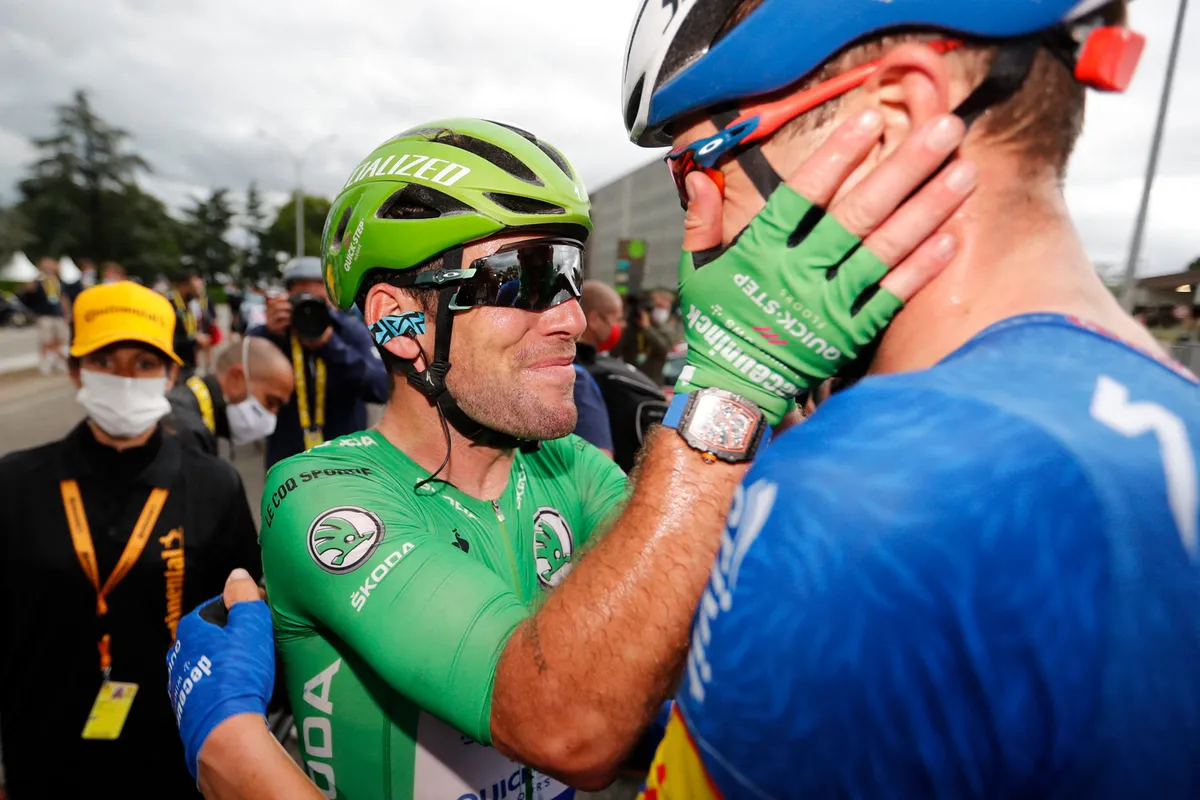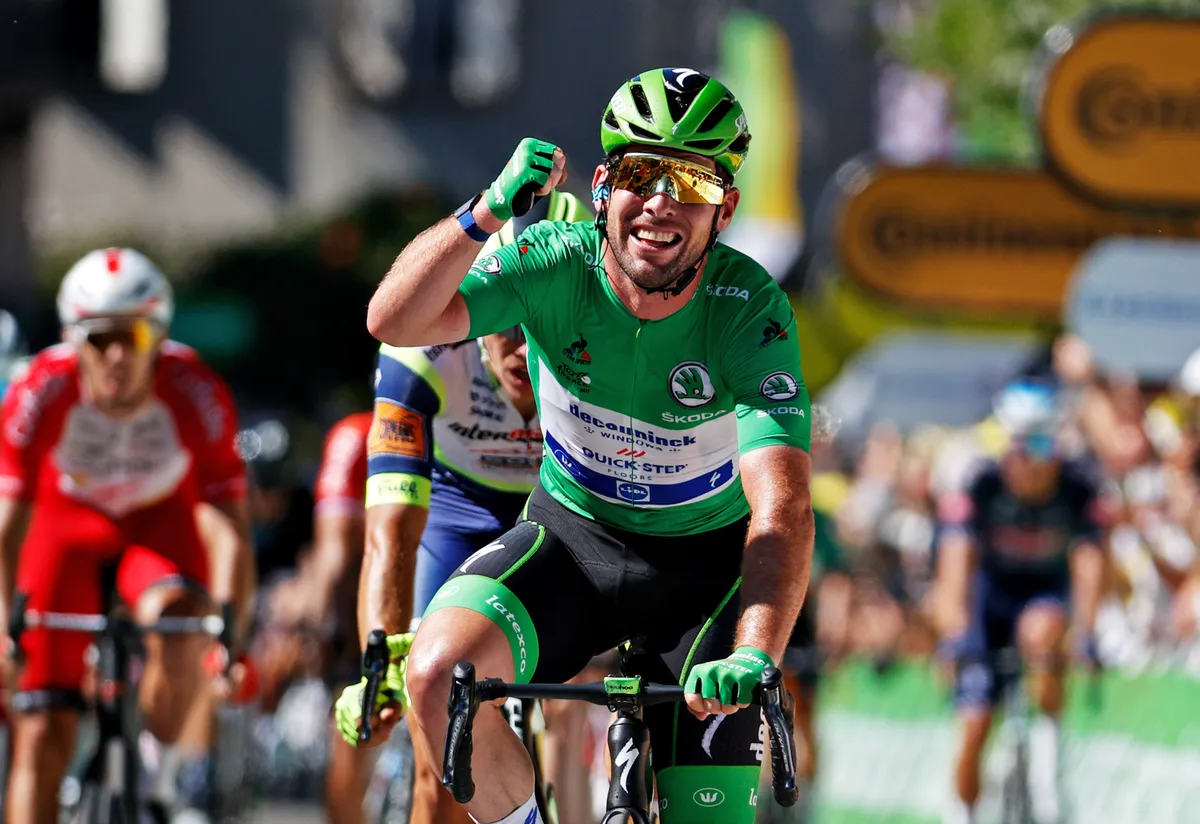Mark Cavendish won four stages of the 2021 Tour de France to top the points classification and pull on the green jersey on the Paris podium for the second time in his career. These are the two bikes Cavendish won the green jersey on, a decade apart.
Cavendish’s first green jersey triumph came in 2011, in his seventh season as a pro. Specialized had replaced Scott as HTC-Highroad’s bike sponsor for the season and, after starting the year on the Tarmac SL3, Cavendish switched to the newly-released Venge in the build-up to the Tour de France.
Ten years later, Cavendish now rides the Specialized S-Works Tarmac SL7 in Deceuninck-QuickStep livery. What happened to the Venge, eh?
Comparing the two bikes takes us on a journey of bike tech over the past decade, from the rise of the no-holds-barred aero bike and the arrival of Shimano Di2, to the convergence of lightweight and aerodynamics, the unstoppable disc brake juggernaut and, for the 2021 Tour, clincher tyres in place of tubulars.
Let's take a closer look at Cavendish's two green jersey-winning bikes.
2011 – Specialized McLaren S-Works Venge

- Team: HTC-Highroad
- Frame: Specialized McLaren S-Works Venge
- Groupset: Shimano Dura-Ace Di2 7970
- Stage wins: Five (5, 7, 11, 15, 21)
Cavendish has a long-running association with Specialized but it wasn’t until 2011 that he first rode one of the American company’s bikes.
Cavendish’s first Tour de France stage win came on a Giant in 2008, winning four stages with Team Columbia aboard a Giant TCR Advanced SL with mechanical Shimano Dura-Ace 7800.
Scott then traded places with Giant as the team’s sponsor, with six stage wins and five stage wins in 2009 and 2010 respectively on the Scott Addict.
The Project F01, a predecessor to the Scott Foil, was launched ahead of the 2010 race and raced by Cavendish in France – including on the final stage on the Champs-Élysées but each of the sprinter’s wins came on the Addict.
Enter, the Venge
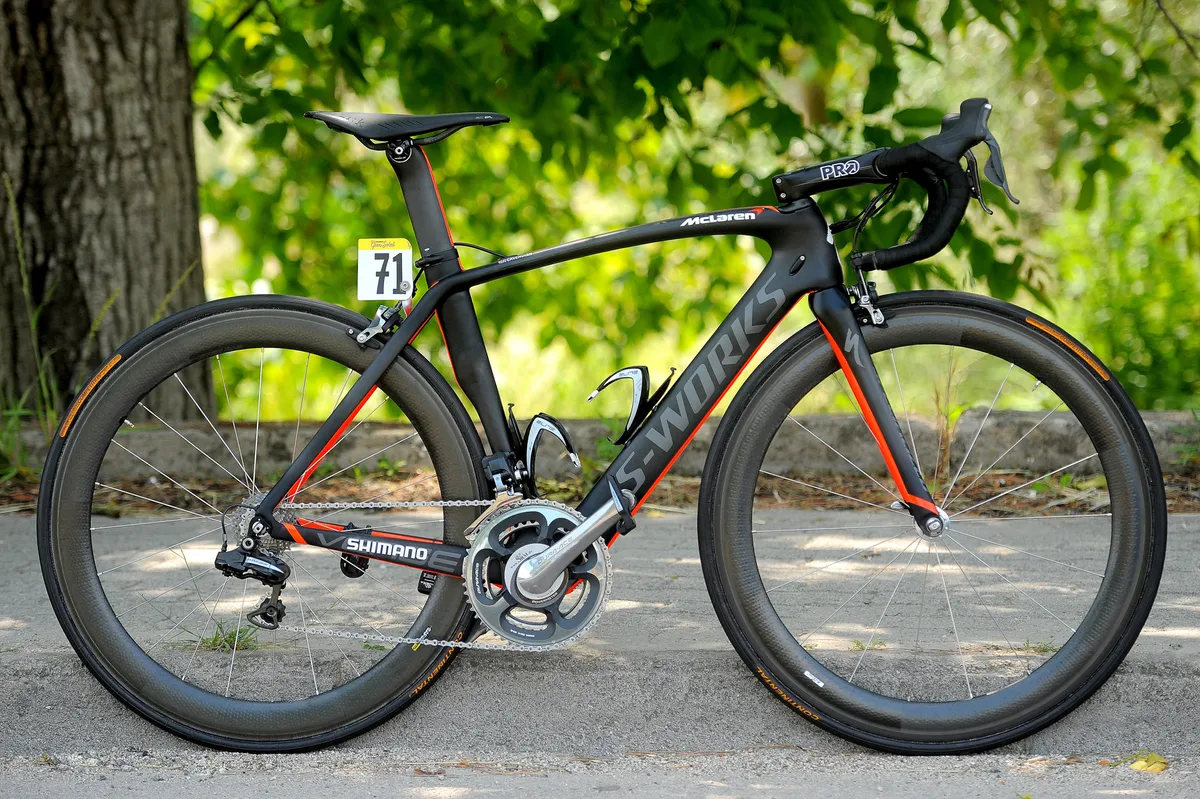
With aerodynamics beginning to shape bike design beyond time trials, Cavendish’s 2011 bike – the original Specialized McLaren Venge – was a sign of things to come over the next decade.
Having signed up as Team HTC-Highroad’s bike sponsor for the 2011 campaign, Specialized’s collaboration with the Formula One giants was unveiled in March 2011.
Winning streak
The Venge was first used at that season’s Milan-San Remo, with Cavendish’s HTC-Highroad team-mate, Matthew Goss, giving the bike a winning debut.
Cavendish went on to use the Venge at the Giro d’Italia, winning two individual stages in Italy before leaving the race to focus on the Tour de France.
While Cavendish’s 2008 Giant TCR weighed 7.2kg, the Venge (according to our reporting at the time) crept up to 7.65kg – 850g over the UCI’s weight limit of at least 6.8kg – in the pursuit of aerodynamic gains. Still, the frame was no heavyweight, coming in at a claimed 950g.
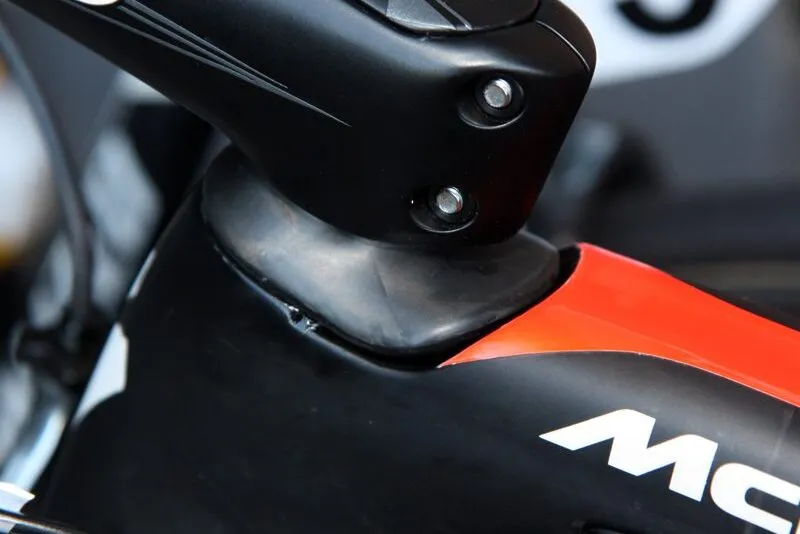
The McLaren Venge’s deep tube profiles, seat tube cutaway and sculpted seatpost were a far cry from the traditional shapes of the previous season’s Scott Addict (and, indeed, the Tarmac SL3), but it was a bike that set the tone for Specialized’s ‘Aero is everything’ decade.
According to Specialized’s testing at the time, the Venge was claimed to save anywhere from 3W at 20km/h to 23W at 45km/h, compared to the Tarmac SL3.
Di2 debuts
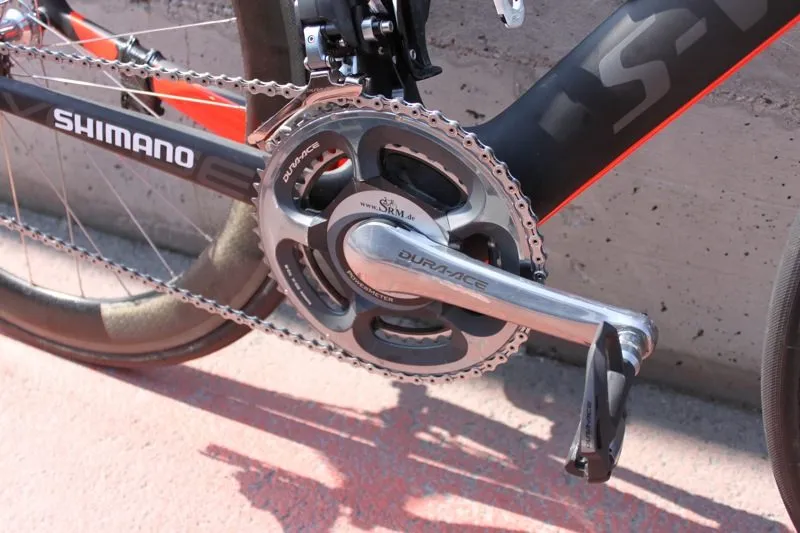
Cavendish started life as a pro on mechanical shifting but by now had switched to Shimano’s 2009 Dura-Ace 7970 Di2 electronic groupset.
7970 was Shimano’s first Di2 groupset – one we described as offering “incredibly smooth, precise and reliable shift performance that cable-actuated systems can't match” in our original review – and Cavendish also used the SW-7972 ‘Sprint’ satellite shifters for quick gear changes from the drops.
Mix-and-match
One of the trends we've seen over the past decade is the move towards bike brands launching (or paying more attention to) in-house component brands.
For Specialized, that means Roval wheels and components, and on Cavendish 2021 bike, the Roval wheels are wrapped with Specialized tyres, while the integrated cockpit components are also from Specialized (being proprietary to the Tarmac).
Often, teams are also tied into deals with the 'big three' groupset manufacturers – Shimano, SRAM and Campagnolo – which sees each brand's wheels and finishing kit used on team bikes, too.
Back in 2011, however, there was more license for teams and riders to mix-and-match components. For Cavendish, that meant custom-built wheels with Zipp 360 rims laced to Shimano Dura-Ace hubs with Sapim Race spokes.
Cavendish’s build also marked him out as a sprinter, with an oversized PRO Vibe Sprint carbon stem paired with a super-stiff PRO Vibe Sprint aluminium handlebar – both part of a Cavendish range from PRO, bearing his signature.
Otherwise, there was an SRM crank spider-based power meter, Shimano PD-7900 pedals with a custom axle to add 2cm to the Q-factor, a Fizik Arione CX saddle and Continental Pro Limited Competition tyres, in a decidedly old-school 22mm width.
Green-eyed sprinter

Having established himself as cycling’s fastest sprinter over the course of the three previous seasons, Cavendish continued his dominance in the 2011 Tour de France, winning five stages – 5, 7, 11, 15 and 21 – on the Specialized McLaren Venge. With those wins came the green jersey.
Cavendish would also go on to win the 2011 UCI Road World Championships on the Venge, before moving to Team Sky and a year in the rainbow jersey – and three Tour de France stage wins while riding in support of Bradley Wiggins’ yellow jersey campaign – on the Pinarello Dogma 2.
2021 – Specialized Tarmac S-Works SL7
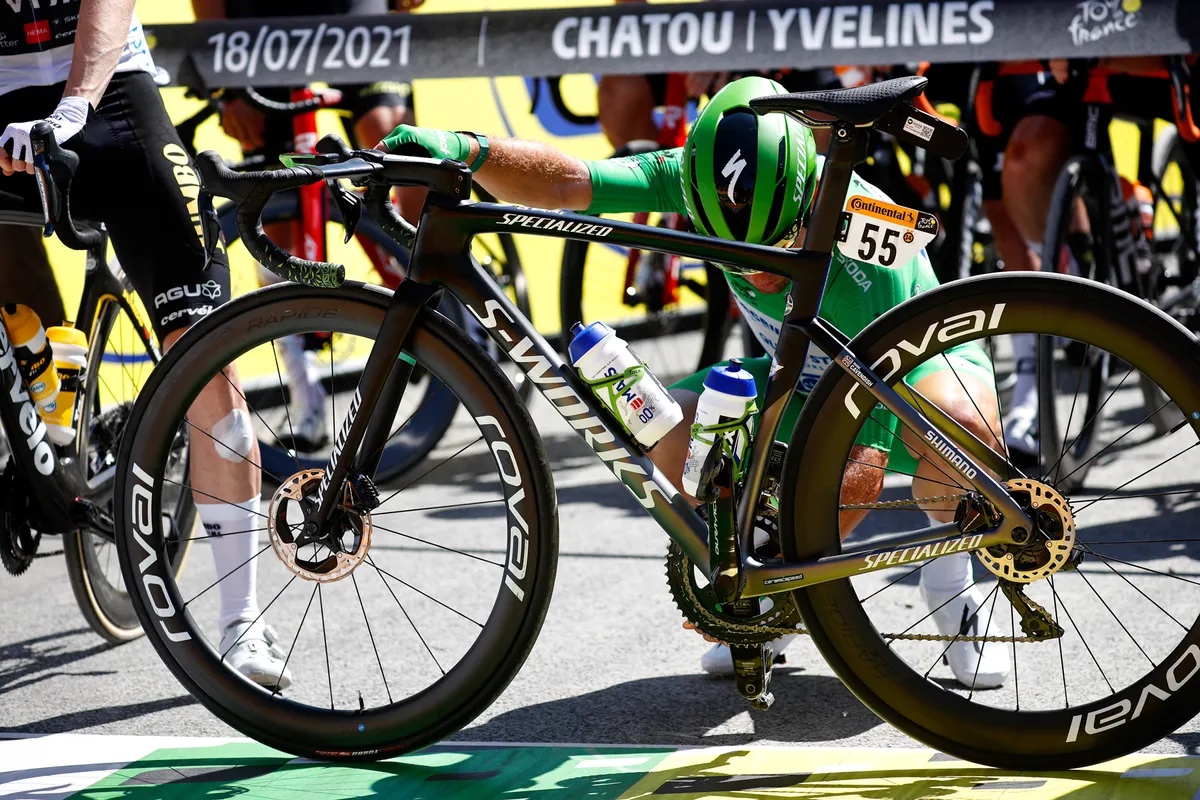
- Team: Deceuninck-QuickStep
- Frame: Specialized S-Works Tarmac SL7
- Groupset: Shimano Dura-Ace Di2 9170
- Stage wins: Four (4, 6, 10 13)
Having secured a one-year contract and a reunion with QuickStep boss Patrick Lefevere for 2021, Cavendish returned to the Tour de France on the Specialized Tarmac S-Works SL7.
Cavendish received a late call-up to the Tour due to an injury to the team’s fancied sprinter, Sam Bennett. A final Tour de France for Cavendish, surely, and maybe – just maybe – another victory?
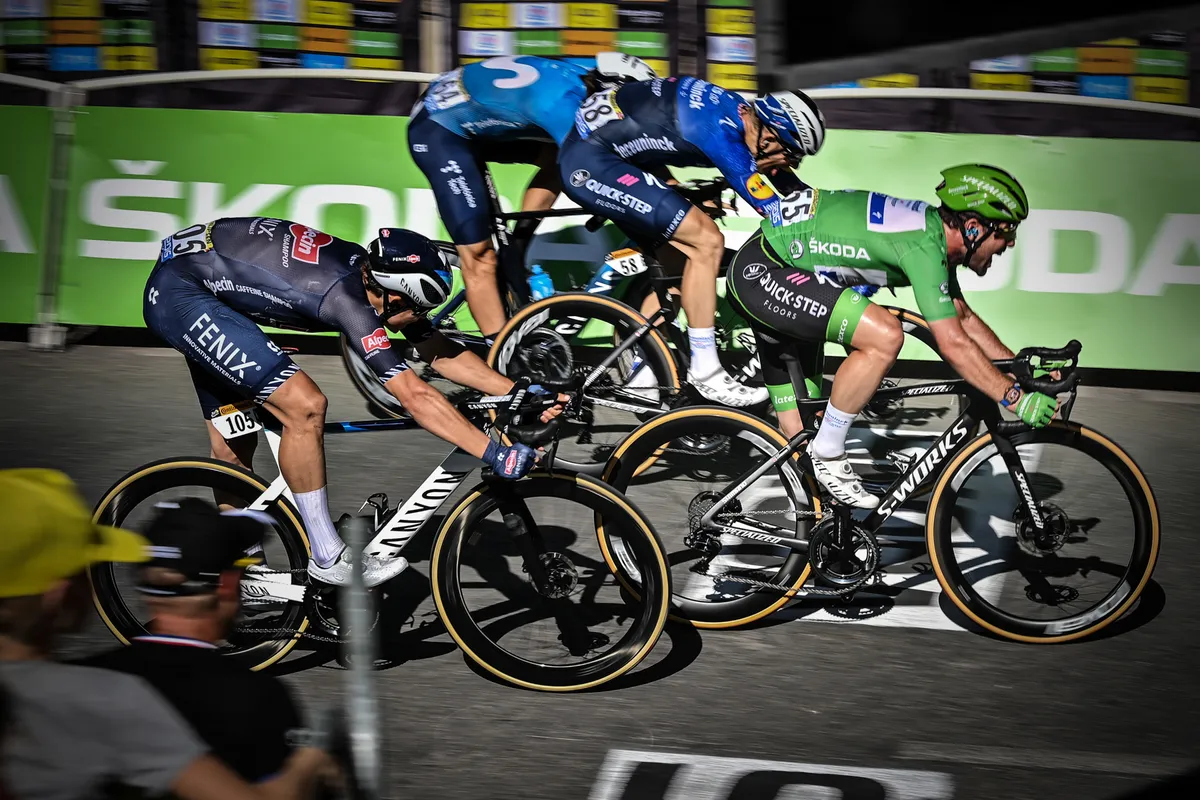
Well, you know the story by now but Cavendish’s return to cycling’s greatest race for the first time since 2018 has been nothing short of remarkable.
Four stage wins, 34 in total, and the green jersey for the second time in his career, a decade after pulling on the maillot vert in Paris.
Move over, Venge
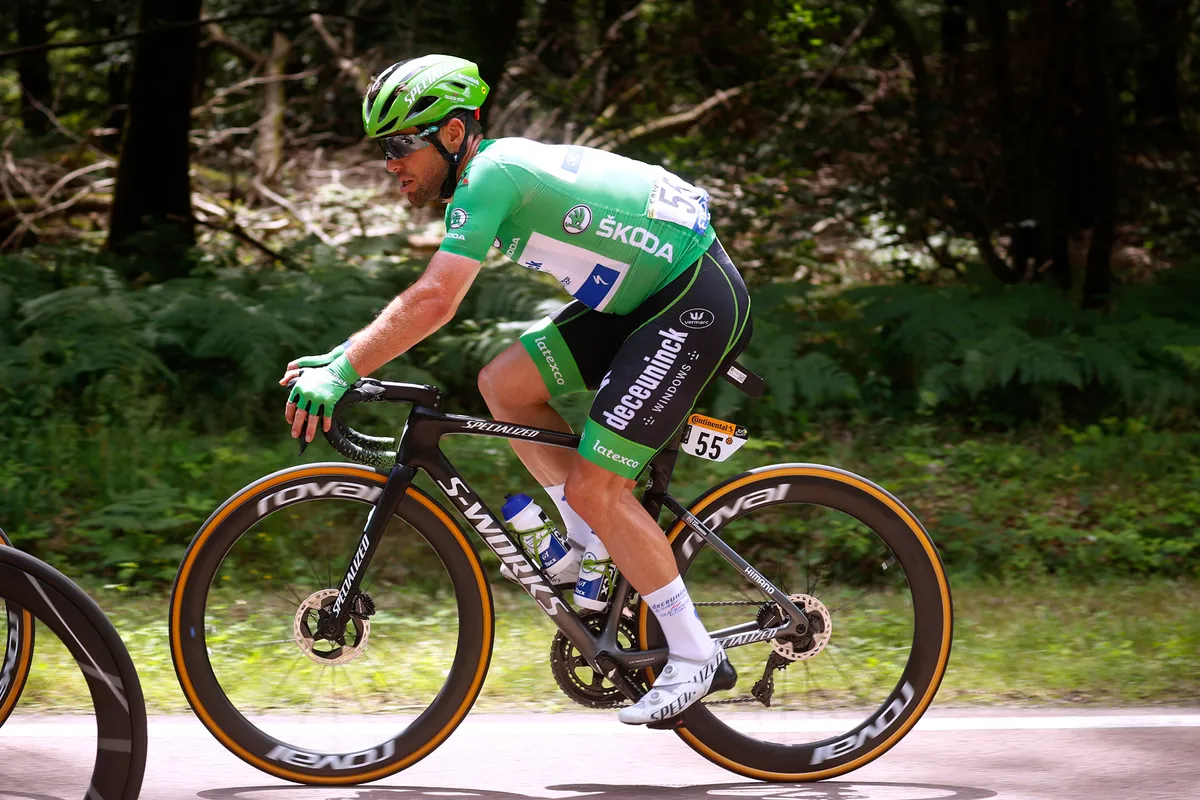
Remember the Specialized Venge? Well, that’s been cancelled. After years of promoting ‘Aero is everything’, Specialized combined lightweight and aerodynamics into one package with the Tarmac SL7, launched in July 2020 (even if, by Specialized’s own admission, the Venge was the faster bike aerodynamically).
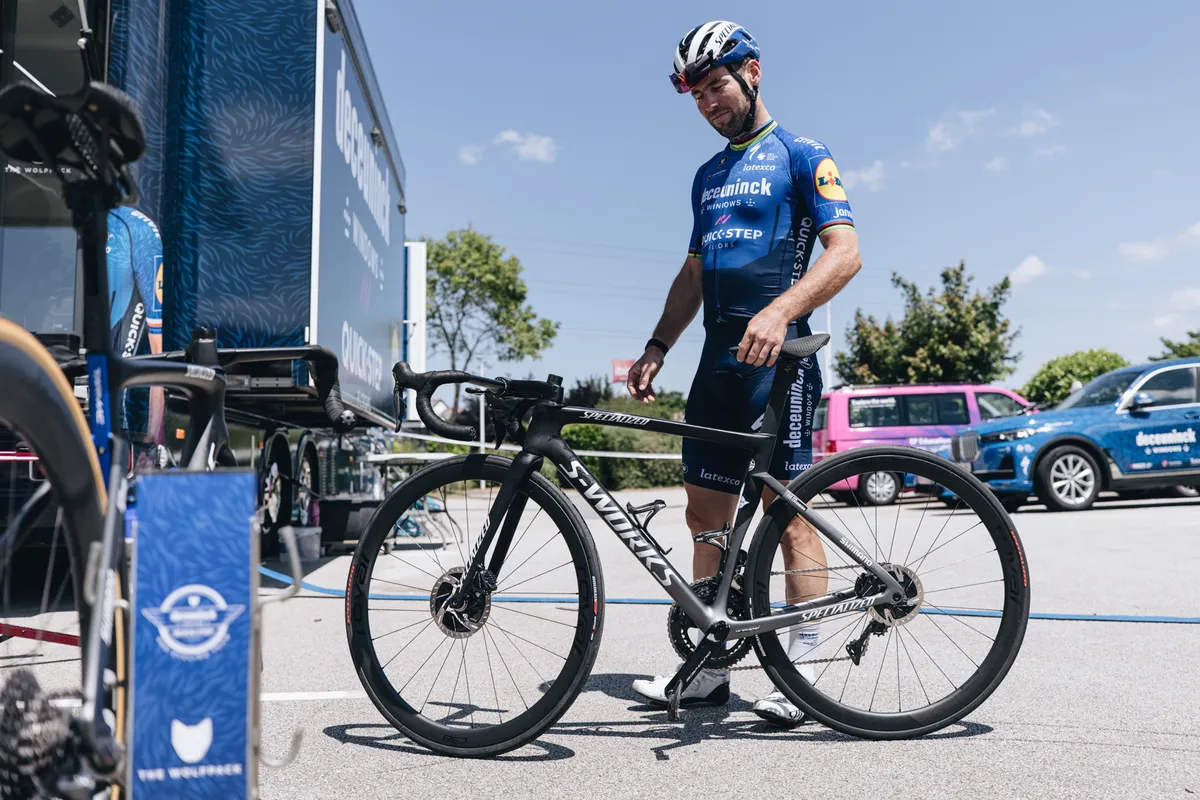
There has, unsurprisingly, been an aerodynamic theme to Cavendish’s bikes since the early Giant TCR and Scott Addict, with the Venge ViAS and Cervélo S5 also featuring in the Manx Missile’s bike shed over the years.
However, dedicated aero road bikes have been having something of a hard time of late, thanks to the trend towards race machines that combine both wind-cheating profiles and low weight, and Specialized now offers its sponsored teams and riders only one bike for road stages – the Tarmac SL7.
The top-level S-Works frame is claimed to weigh 800g, while Specialized’s off-the-shelf Dura-Ace Di2 build comes in at a claimed 6.7kg, so Cavendish’s Tour bike is likely to be in that ballpark.
Aero all over
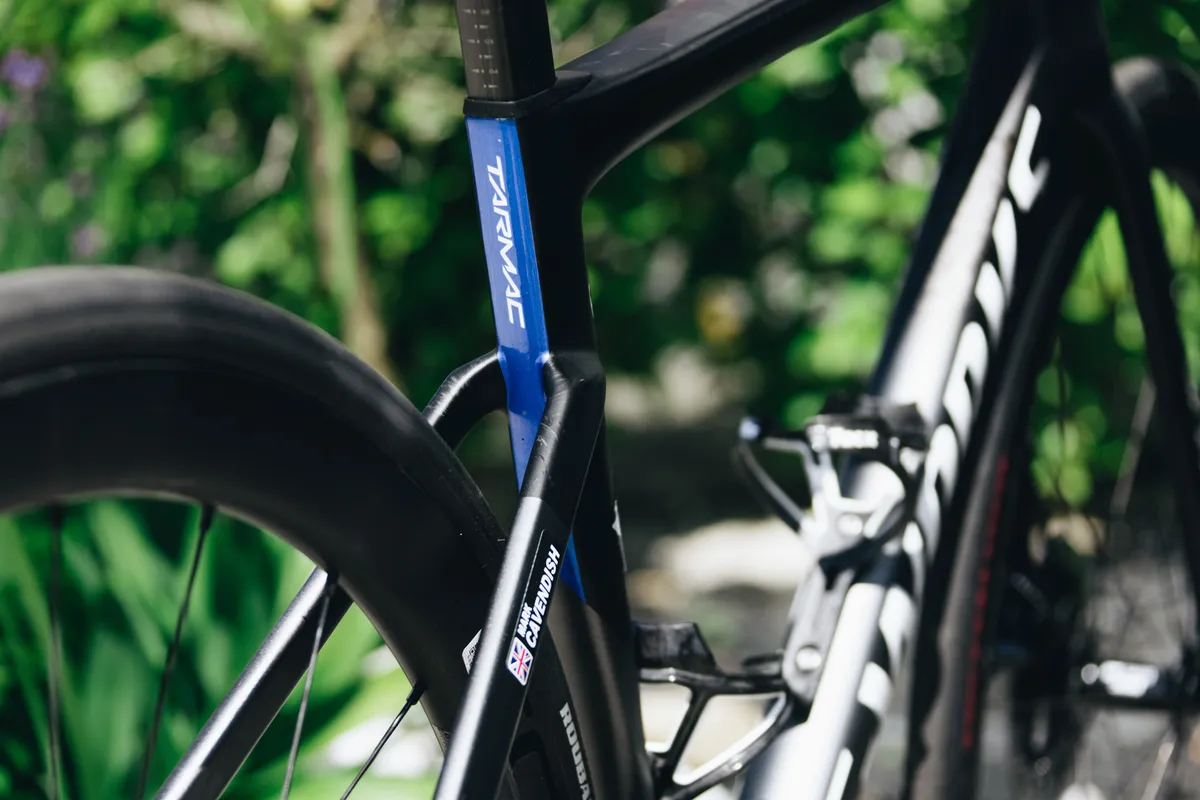
While the Tarmac isn’t quite as aero as the third-generation Venge that came before it (we don't know how it compares to the original Venge, though it's fair to say bike designers are much more aero-savvy in 2021), it does share a similar albeit slimmed-down aesthetic, with dropped seatstays, a rear-wheel cutaway, aero-sculpted tubes and a cable-free cockpit.
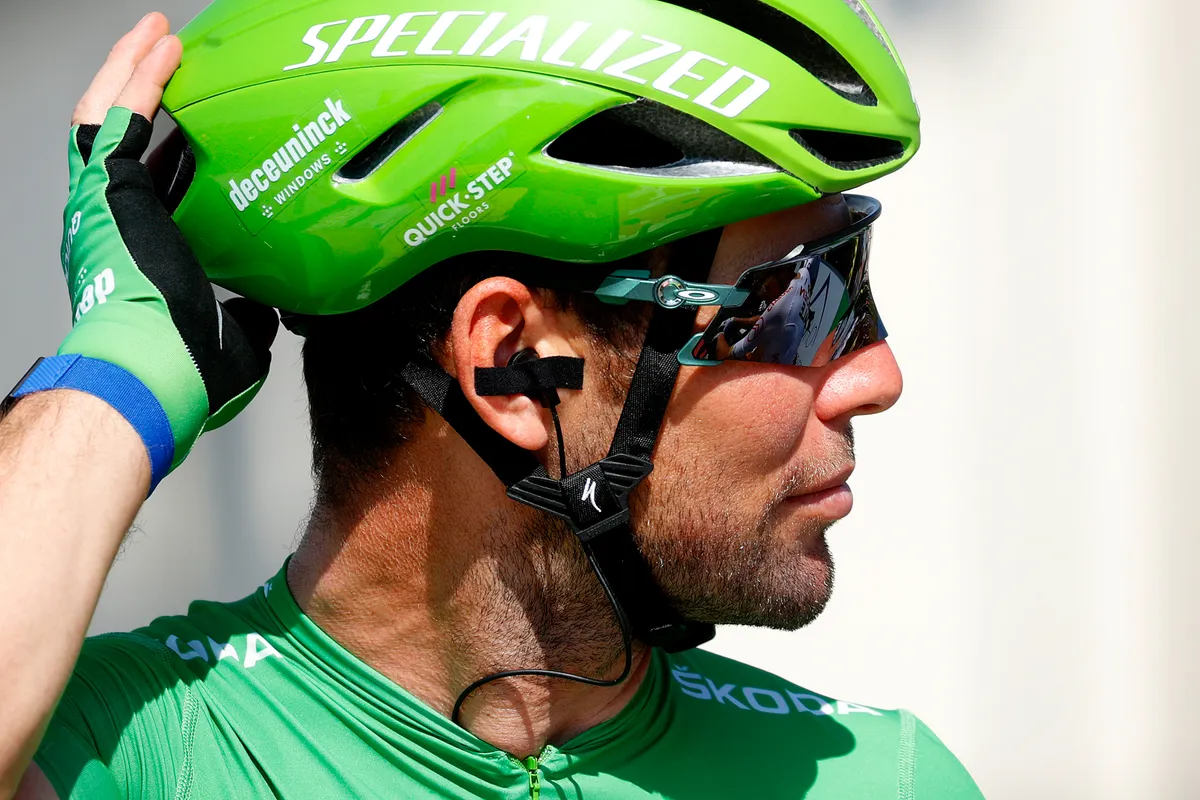
Aerodynamics have filtered into all other areas of a rider's setup, too. From the integrated cockpit on the Tarmac to Cavendish's helmet – a standard lid in 2011 but an aero Specialized Evade in 2021 – and skinsuit.
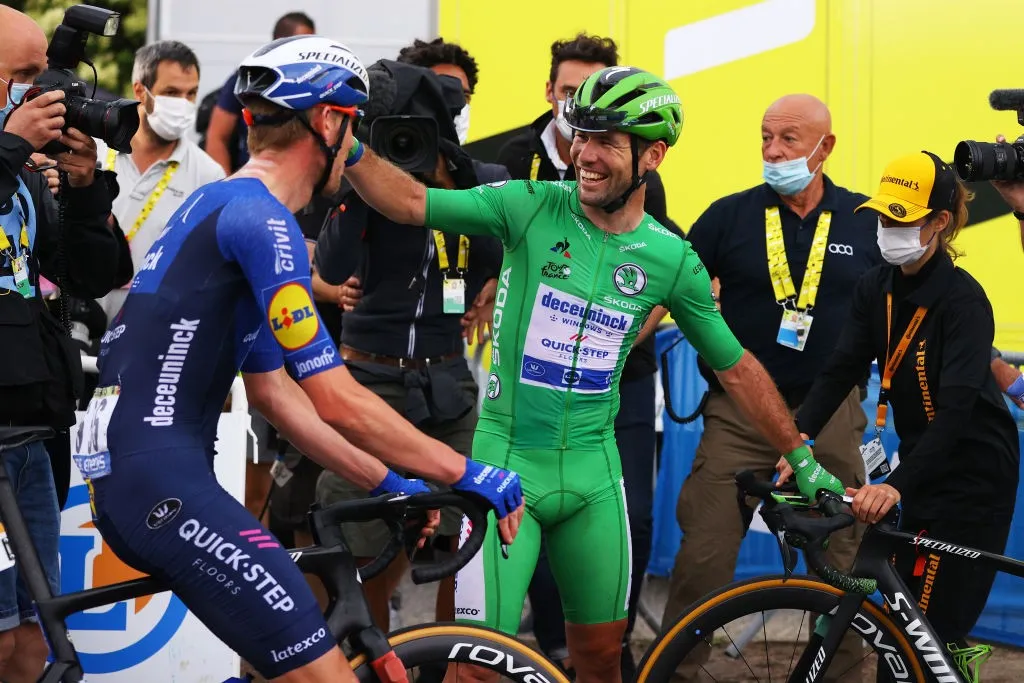
Cavendish wore a standard road jersey for all of his 2011 stage wins, whereas he donned a skinsuit for most sprint stages this year.
Disc brakes for the win
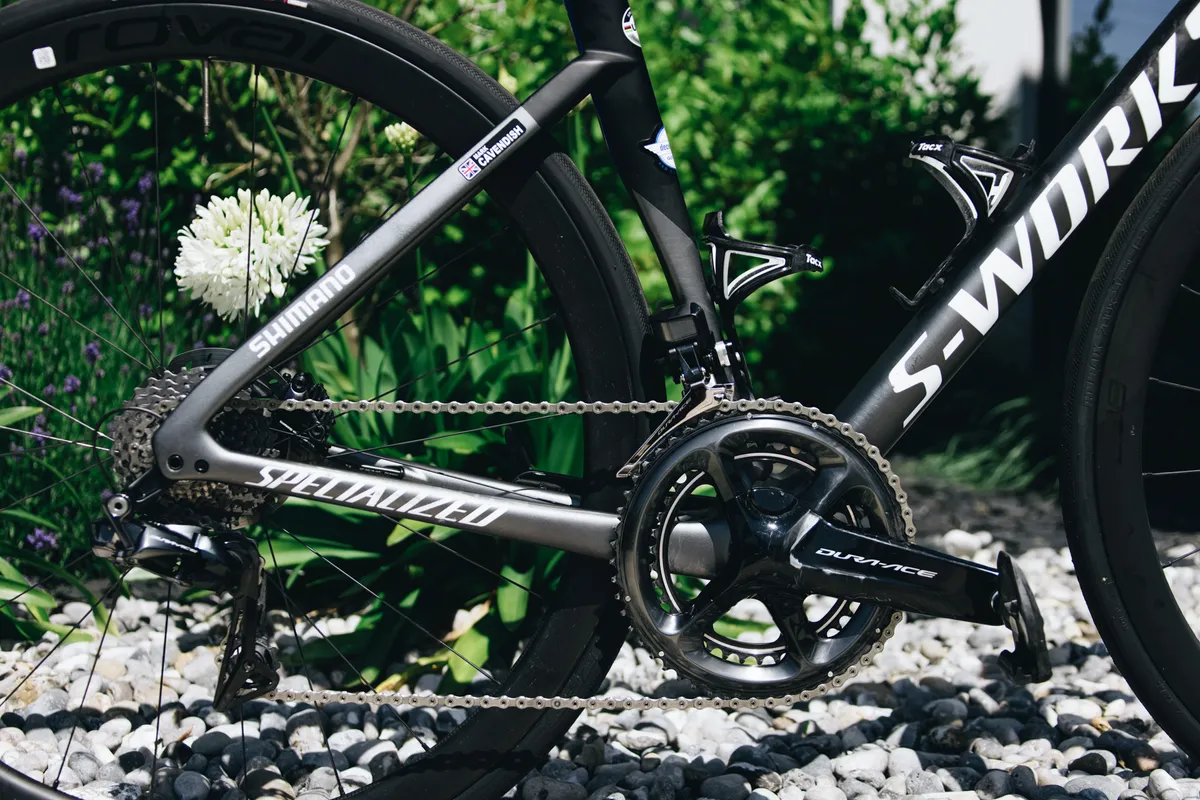
Cavendish’s 2021 bike is equipped with Shimano Dura-Ace Di2 9170 – no sign of the new Dura-Ace Di2 R9200 groupset with Deceuninck-QuickStep just yet – complete with a Dura-Ace power meter.
Back in 2011, SRM was still the dominant power meter brand in the pro peloton – and cycling as a whole – but the market is much more diverse and competitive now, with Power2Max, 4iiii, Rotor and, of course, Shimano all represented on WorldTour bikes.
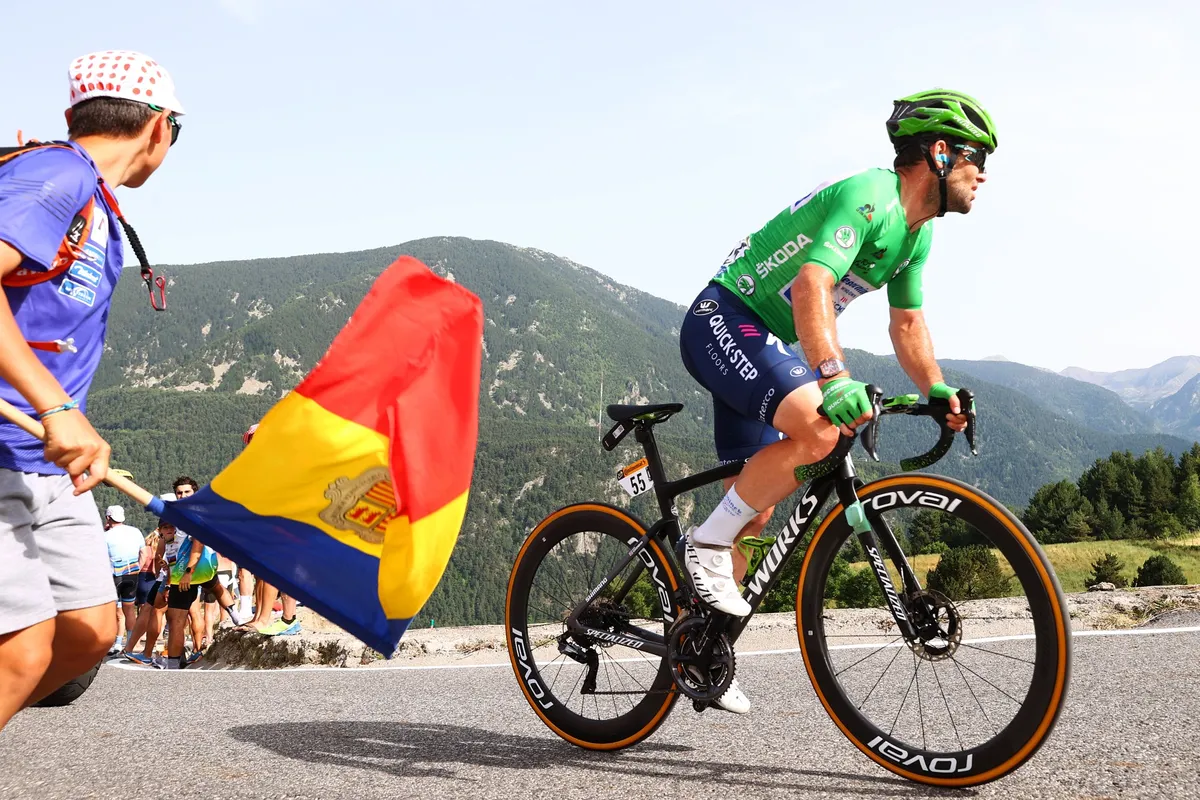
Cavendish was also riding – and winning on – road disc brakes for the first time at the Tour de France.
The Tarmac SL7 is a disc-only bike and disc brakes dominated the peloton as a whole this year, with Team Ineos-Grenadiers being the only squad resolutely sticking to rim brakes throughout.
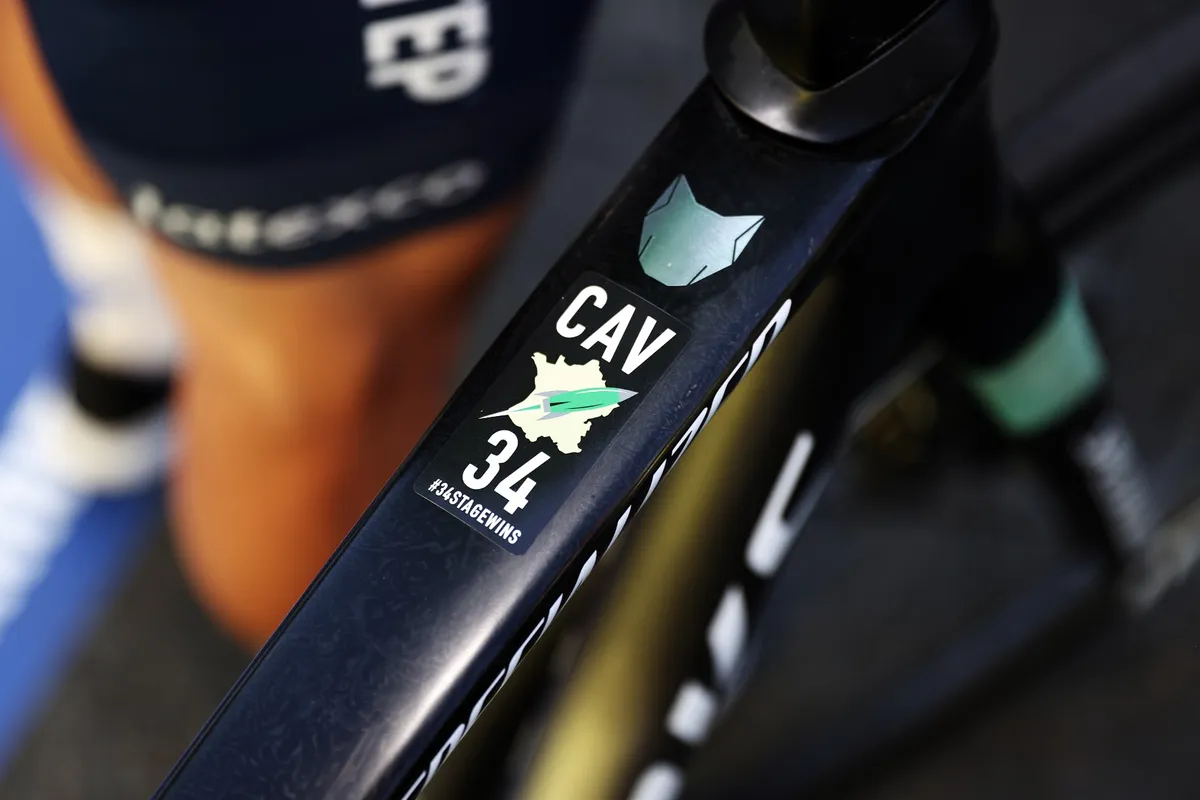
The race winner, Tadej Pogačar, used a disc-equipped Colnago V3Rs apart from on the two Pyrenean summit finishes, where he switched to the rim brake equivalent.
Time's up for tubs
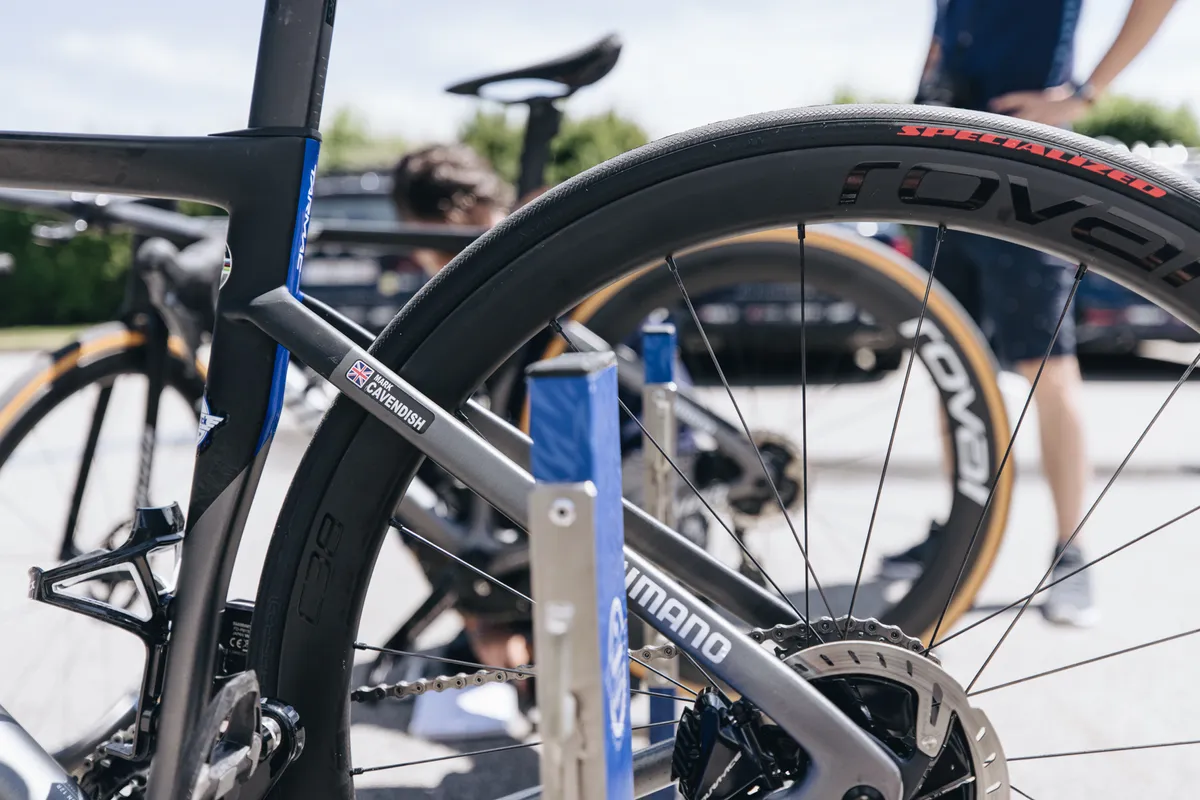
Cavendish also used clincher tyres through the Tour – something his Belgian team has been doing for a while now after Specialized’s testing showed clinchers and inner tubes to apparently be the fastest setup.

The Specialized Turbo Cotton tyres are wrapped around Roval Rapide CLX wheels. Specialized also provides the S-Works Power with Mirror saddle, continuing the theme of sponsor convergence.
What’s next for Cavendish?
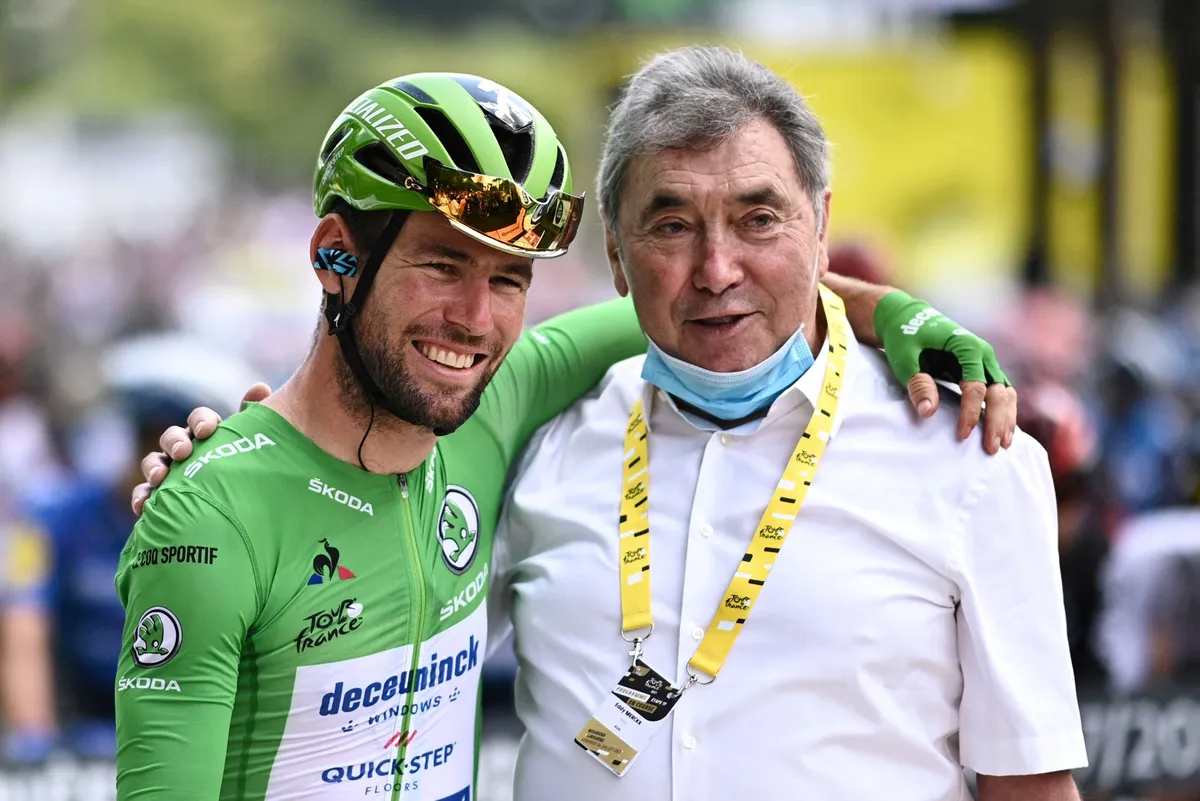
Well, his contract with Deceuninck-QuickStep runs until the end of the 2021 season but, after four stage wins and a second green jersey in 2021, Cavendish will surely be eyeing up the opportunity to move past Eddy Merckx as the most prolific stage winner in Tour de France history.
We’ll be watching Cavendish – and his bike – with interest.
